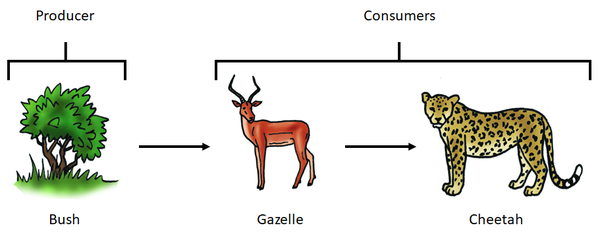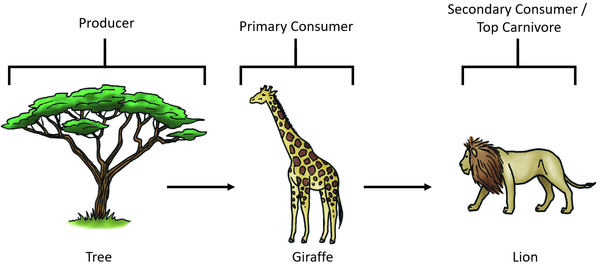Difference between revisions of "Consumer"
(→Key Stage 4) |
|||
| Line 50: | Line 50: | ||
===About Consumers=== | ===About Consumers=== | ||
: [[Consumer]]s are in the second [[Trophic Level|trophic level]] or higher. | : [[Consumer]]s are in the second [[Trophic Level|trophic level]] or higher. | ||
| − | : [[Consumer]]s may be [Primary Consumer|primary]] [[Secondary Consumer|secondary]], [[Tertiary Consumer|tertiary]] or [[Quaternary Consumer|quaternary consumers]]. | + | : [[Consumer]]s may be [[Primary Consumer|primary]] [[Secondary Consumer|secondary]], [[Tertiary Consumer|tertiary]] or [[Quaternary Consumer|quaternary consumers]]. |
: [[Consumer]]s are usually either [[animal]]s or [[fungi]]. | : [[Consumer]]s are usually either [[animal]]s or [[fungi]]. | ||
Revision as of 11:57, 18 November 2018
Contents
Key Stage 2
Meaning
A consumer is a creature the eats other creatures.
About Consumers
- A consumer cannot make its own food so it must eat other creatures.
- A consumer might eat a producer, or it might eat another consumer.
Examples
| In this food chain the bush is the producer and the gazelle and cheetah are consumers. |
| In this food chain the grass is the producer and the grasshopper, baboon and cheetah are all consumers. |
Key Stage 3
Meaning
A consumer is an organism that feeds off other organisms.
About Consumers
- A consumer cannot make its own food so it must eat other creatures.
- A consumer might eat a producer, or it might eat another consumer.
- Consumers can be labelled as primary, secondary, tertiary and quaternary, depending on where they are in a food chain.
| In this food chain the giraffe is a primary consumer and the lion is a secondary consumer. |
| In this food chain the grasshopper, pied flycatcher, skunk and vulture are all consumers. |
Key Stage 4
Meaning
About Consumers
- Consumers are in the second trophic level or higher.
- Consumers may be primary secondary, tertiary or quaternary consumers.
- Consumers are usually either animals or fungi.



